From simulation to intuition layer: the intelligence of space itself
Weeknotes 365 - Universal Ambient intelligence or immersive AI, how does it create general intuition? Connecting things that triggered thoughts this week. Like more news on human-AI collaborations.
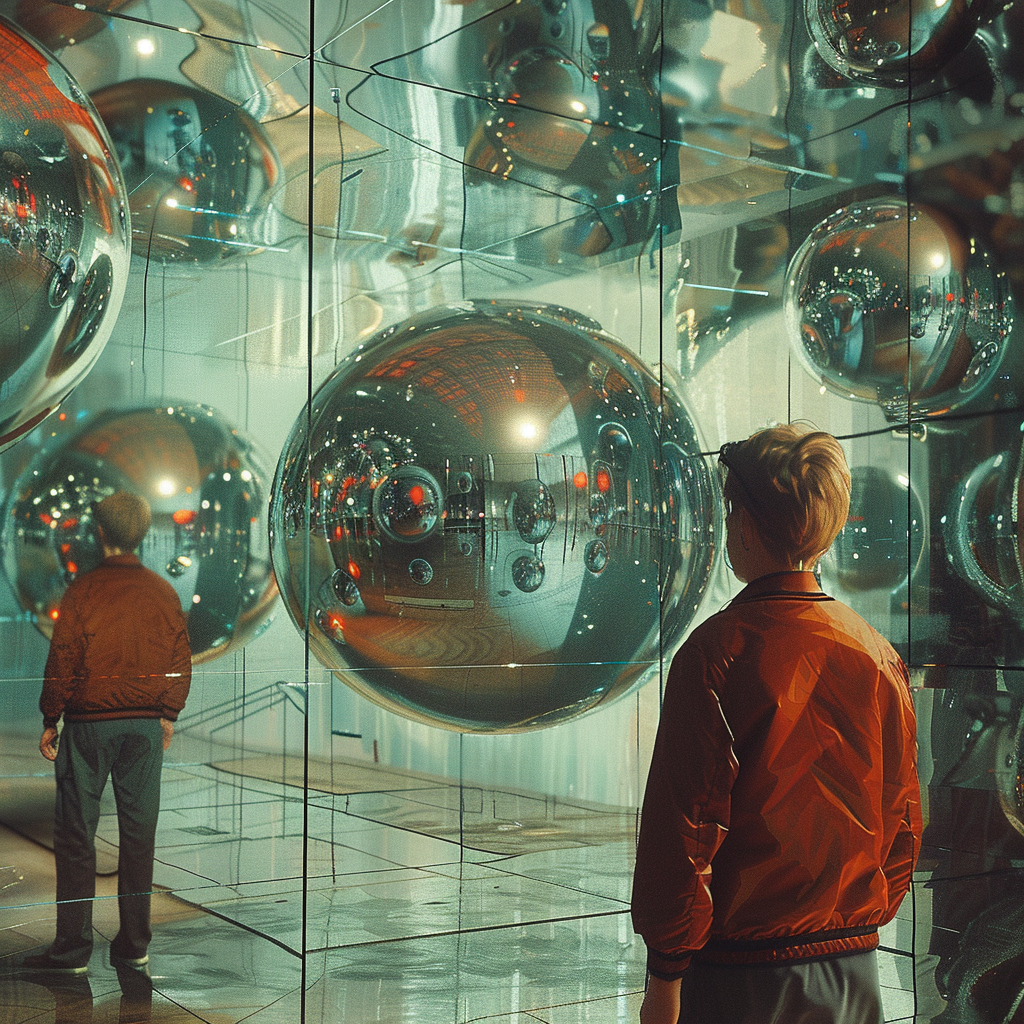
Weeknotes 365 - Universal Ambient intelligence or immersive AI, how does it create general intuition? Connecting things that triggered thoughts this week. Like more news on human-AI collaborations.
Dear reader!
As always, the last weeks before TH/NGS are underway, the program is fully booked, and we have started final production preparations. Thinking about our signature badge-making experience, what would we provide this year? And planning for signage and more.
And finalizing the last workshops with the moderators. If you are following the news from ThingsCon, you know the latest additions. Otherwise, check it here: https://thingscon.org/events/things-2025/program/ (and don’t forget to use TC-COT-25 for a nice discount when registering, where COT is Cities of Things of course).
It was also very nice to visit Tumo at Oba Next in Kraaienest. A promising new initiative to learn teens about technology by making. We plan to hold a workshop to share insights at TH/NGS as well.
Week 365: From simulation to intuition layer: the intelligence of space itself
Other things that happened last week were the launch of the new book by Laurens Vreekamp and Gabriella Obispa. I was happy to be at the launch event, where we had good conversations about the topic “Not our AI (Niet onze AI)”. I promised Laurens to reflect on the book here, but I did not have time to start reading properly. In the conversations, the balance of influence and interest is quite clear; look beyond the typical Silicon Valley version. I am wondering what strategy is ultimately promoted: create the right guardrails and policies, and stimulate AI that respects all cultures. So arrange a better ‘design’.
Or do we need to change the process of emergence of AI, more grassroot making, more collectives driving the shaping of the AI. Of course the one does not exclude the other.
Long story short, I will come back to it later. Check it out yourself.
In this books section, I received my copy of Leuk! by Linda Duits, a book I backed on Voordekunst, but I could not attend the official launch party. Bummer. I have already listened to some interviews and started reading. Also, more later. The theory of pleasure, of finding resonance, feels very much related to designing interactions, and peeking into the contents, I think there is a part that can relate to design for community and collectivity, something closely related to the research endeavors in civic protocol economies lately. Check it out here.
It relates in a way to the triggered thought. Or better said, it could be ingredients if the triggered thoughts are elaborated further. Promoting togetherness in an environment infused with other intelligences.
This week’s triggered thought
A typical triggered thought and connected things happening. Chronologically, I was listening to an interview with Pim de Witte of General Intuition. This company creates simulations to prepare us for a future in which intelligence becomes part of our continuous context, our physical space we live in. They combine the insides of gaming to create a playspace for reality. The name of the company frames how we might be influenced by a new kind of intuition infused by this ambient intelligence.
That brings me to a second news item in this same space; Matt Webb, who is mentioned here often with his sharp observations in his blog and interesting projects, is starting a new initiative (with Daniel Fogg), a company that focuses on what they frame as universal ambient intelligence.
“We are building technology to augment your environment and increase your agency.”
Then what happens when we’re together with AI in these environments? Interfaces will be intent-first so what’s the room-scale OS for all of this? What are the products you find there?
Matt writes in his announcement blogpost. They are calling it Inanimate. Which is an interesting frame. How lifeless is it? Will that environment become a thing on its own to relate to? How do we call that? So is that the general intuition in a way? Is it the environment that is living on our intent to interact, and how much agency will it have to become an active interrupter? Will it be a form of perturbations?
I mentioned before that I am curious about the next stage in our relationship with AI as it becomes an ubiquitous, immersive part of our environment. In the short article I wrote for the last RIOT publication, I examined “how generative things reshape human-machine relations across three nested layers: interaction, emotional engagement, and social collectivity. The article articulates the socio-technical challenges of balancing personal agency, emotional resonance, and collective governance in AI-augmented environments.” An AI made this summary; therefore, I found it honest to quote it.
For me, this connects closely with the concise formulation of Matt and Daniel: “We believe in togetherness.” And Matt writes he’s “Team Augmented Environments. Mainly because so much of what I care about happens in small groups in physical space: family time, team collaboration, all the rest.”
This time, the image Midjourney generated from my prompt feels quite right; will it be a form of bubbles, or more of a continuous space? (The prompt I gave Midjourney was: “mirror world as an intelligence as a simulation”).
The question becomes: how do we design these responsive environments without losing human agency in spaces that "think" around us? The gaming simulation approach of General Intuition might offer a way to test these dynamics, to understand the delicate balance between helpful responsiveness and overwhelming automation.
We're not building smarter things or better apps. We're building intelligence into the fabric of physical experience itself. The next wave of human-AI-things co-performance happens in the spaces we inhabit, making every environment a collaborative partner in our daily lives.
About me
For new readers, I'm an independent researcher through co-design, curator, and “critical creative”, working on human-AI-things relationships. You can contact me if you'd like to unravel the impact and opportunities through research, co-design, speculative workshops, curate communities, and more. I am currently working on a self-initiated research project to reflect on the Cities of Things, 7 years later. Next to that, there are other research projects, (master)classes, strategic and creative advice to build relevant team human-AI-things partnerships.
Currently working on: Cities of Things, ThingsCon, Civic Protocol Economies.
Notions from last week’s news
AI is eating the world new presentation by Benedict Evans.
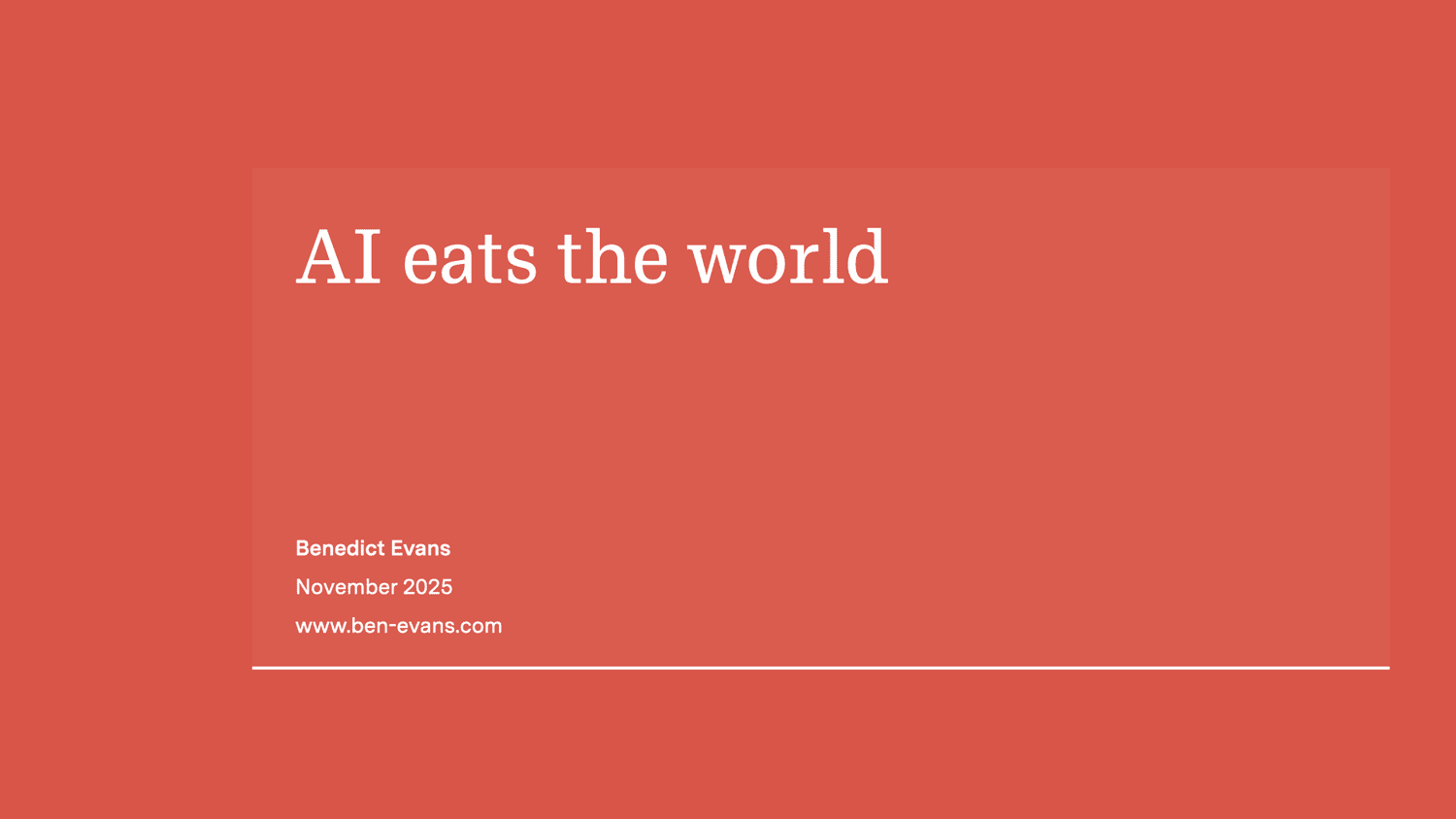
Nate has a take.
New models in the house: Claude Opus 4.5 focused on agentic coding.
Human-AI partnerships
What did OpenAI do when users about? Group chats
Are we curious about what this new design would look like?
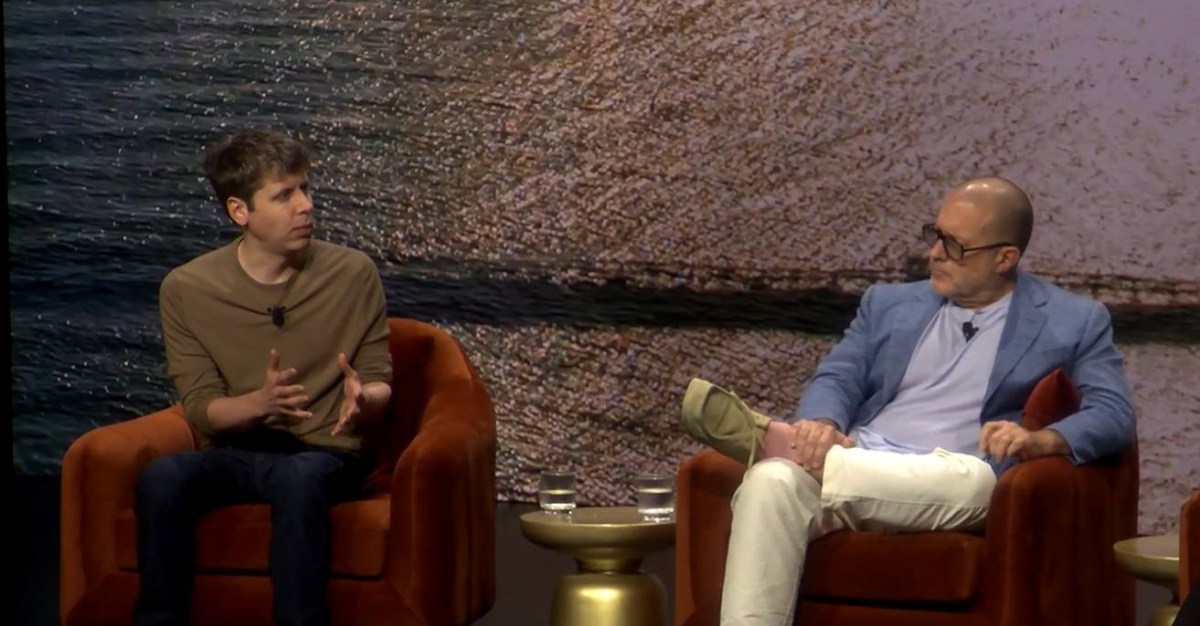
On the one hand, this is an interesting conclusion: the ad-based shopping platforms will suffer from agents that do the buying as they are less receptive to ads. The DoorDash problem. Otoh; why would there not be a possibility for a new category of ads that influences the bots specifically? OpenAI shopping assistant.
Fueling conspiracy even more with the new image generators. Evil bananas.
Research is a new playing field for AI-assisted work. Trust Cards.
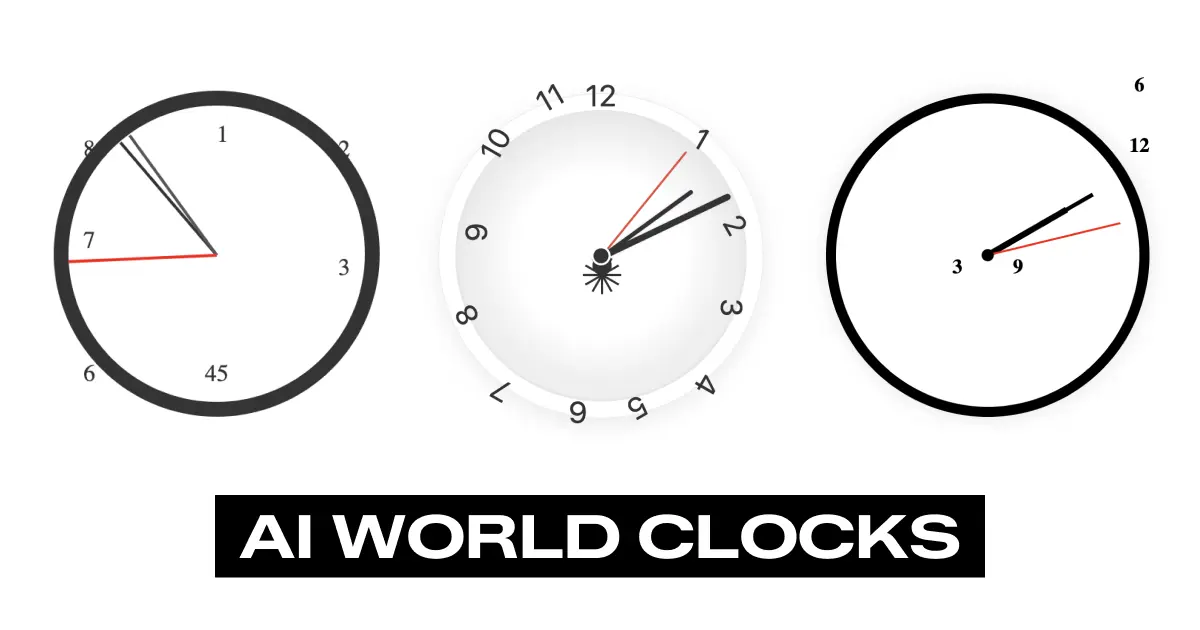
Robotic performances
Trends in robotics and AI. Six trends.
Don’t limit your imagination to what exoskeletons will do. Underwater.
The age of personal robotics has just begun, and these are ways to understand what we need from our assistants. Memo home robot. Armstrong robots.
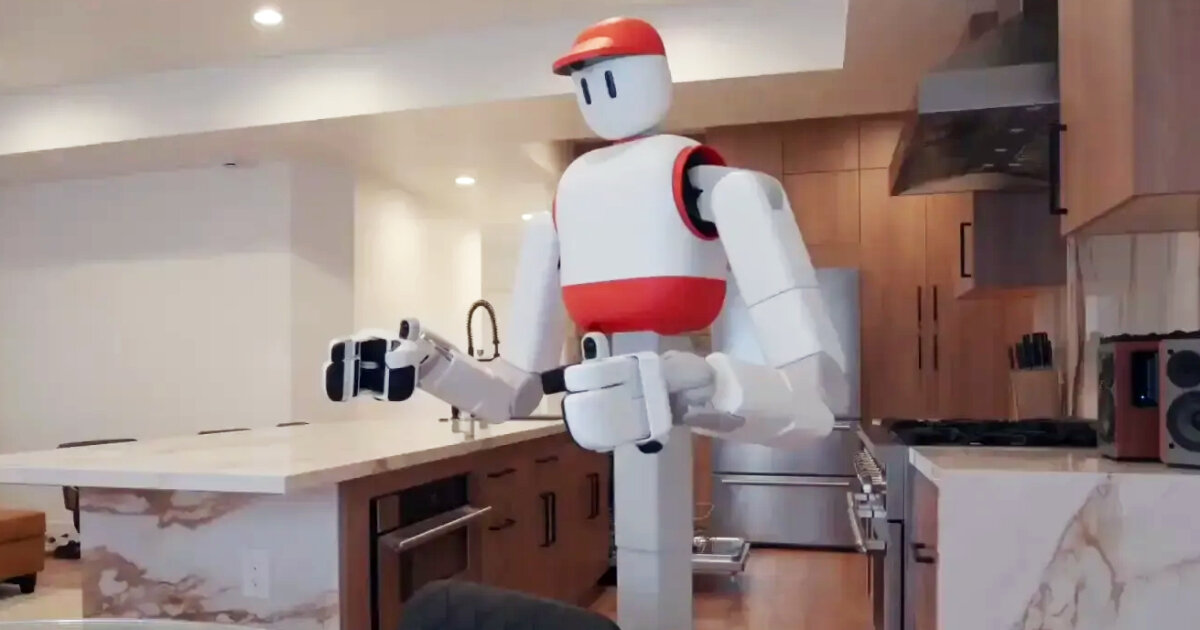
Miniaturization is another driver for robotics. Small and edge based.
Immersive connectedness
Immersive AI, team augmented environments, universal ambient intelligence. I will closely follow the new initiative from Matt and Daniel. I like the name too. Inanimate.
More Edge AI. In Windows.
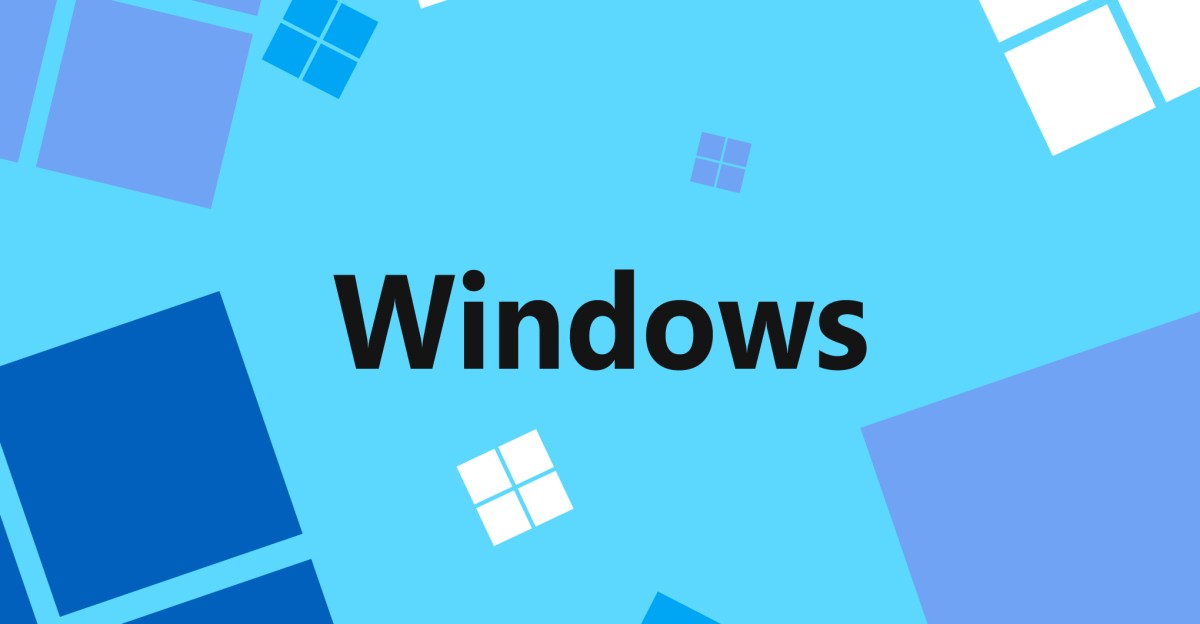
A returning concept, virtual keys and buttons on your analog objects, that used to be a speculative prototype. Not anymore with Proptype.
Immersive connectedness, immersive security breaches. Silent takeovers.
Tech societies
Is there a Slop Layer covering our world?

European infrastructures for tomorrow’s transformations.
What happens when a OG open technology is acquired by a big tech player? Curious to see how this will play out.

In the Netherlands, privacy fighters worry about the possible acquisition of DigID. Apple is trying to start a service like.
How digital twins and personal AI raise new questions about consent, data control, and identity

Concerns on AI in education. Used by the educators to create courses.
The internet was designed to be redundant. Do not forget.
Has the music industry learnt from the last disruption (Napster), and responding now more swift on the AI generated music?
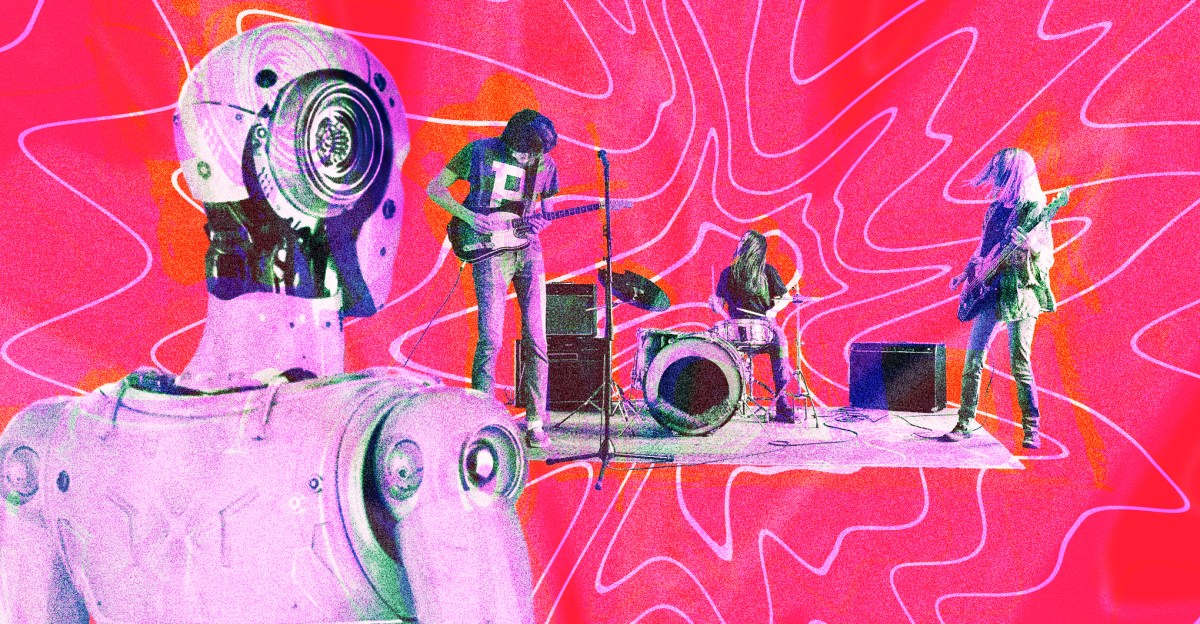
Blaming individuals for AI harms lets big companies avoid responsibility. AI Shaming.
Solving the housing crisis, one tiny house at a time. 3D printed living.
There are different interpretations of this dynamic: do we stop calling something AI as soon as it becomes mainstream, or do we change the definition of intelligence along with the development and improvement of the AI. Fake humans.

Too bad to have missed Mozfest this year. This is one report. I am triggered by ‘unlearning’ as a concept for less data capture of personal data. Unlearning AI.
You would hope the tech workers get more agency to do good. Trustable models.
Too big to fail. And too big to stay on the ball. Gravity Well.
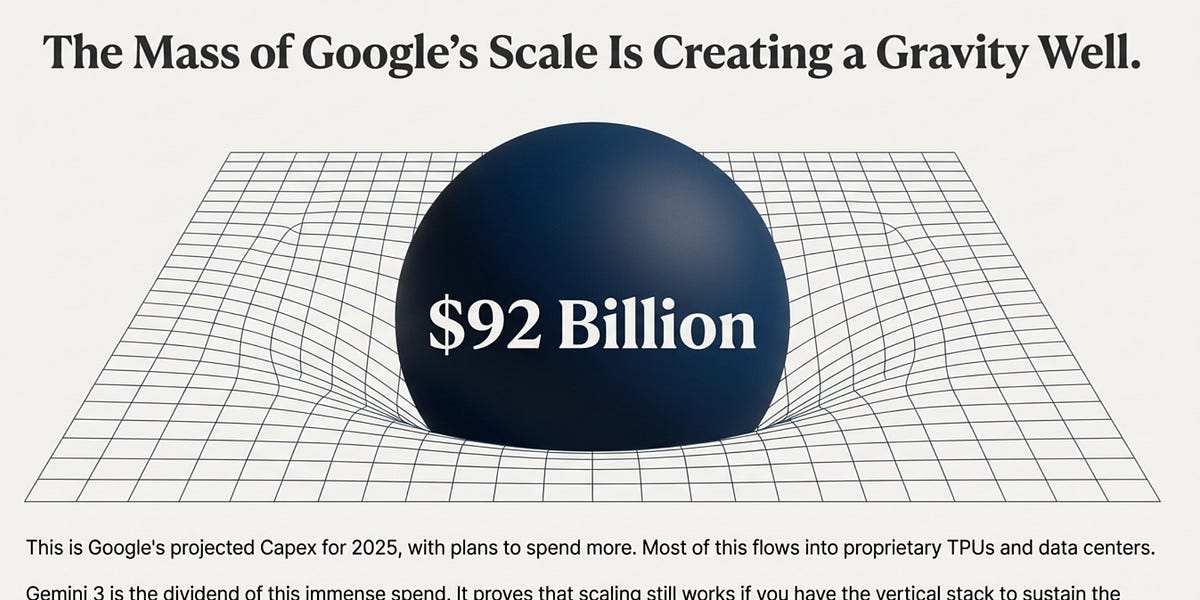
The Great Transformation. In Europe. Eco-Social Union.
What’s up for the coming week?
I am looking forward to the launch of the Social AI Lab of Rotterdam this afternoon. With Cities of Things and the Wijkbot we will definitely look in potential collaborations.
Coming Thursday, Amsterdam AI has an impact festival. AI is everywhere, in every meetup group. Like Amsterdam UX. Creative Mornings Rotterdam seems not AI-focused though. I will attending Degrowing infrastructures, this Thursday, good inspiration for ThingsCon (even with contributors from last year and this year).










